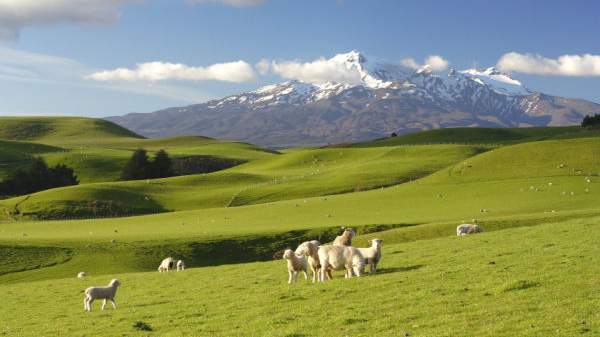Overview
New Zealand is known for high quality produce, but because the Southern Island of Aotearoa is home to barely over one million people, we think they might need some assistance in consuming all that can be foraged from its land, air and sea.
Here are some of Concrete Playground's best gastronomic reasons to head across the Cook Strait.
Land
Even in drier months the landscape in New Zealand is a lush green. The abundance of grass for four legged animals means that the human animal at the end of the chain ends up with a healthier and tastier meal.
It starts with lamb. It has to. Although current statistics show that the person to sheep ratio in New Zealand has dropped to 7:3, that still works out as more than 32 million sheep. When driving around the South Island it is easy to spot numerous woolly winter bottoms peaking out from the green terrain. New Zealand is, of course, one of the largest exporters of lamb in the world. Carnivores will also enjoy the strong flavoured venison provided by the fields of delicate looking deer.
At Wanaka’s Botswana Butchery you can start with a Southland Venison Carpaccio followed by a slab of Fiordland Venison Top Side. Other wintery game meats include rabbit and hare.
Air
Then there are the birds. There are foreigners such as ostrich and pheasant. One of the New Zealand natives however is the Titi, also known as the mutton bird. The Rajuira Maori have rights to gather these birds from the southernmost region of New Zealand - their bounty being served in only a spattering of restaurants.
Queenstown’s Fishbone Bar and Grill serves them pan roasted with kumara chips when they’re in season. The dark meat of the seabird retains the flavour of its fish filled diet. Even after soaking and boiling the flesh in fresh water a strong salty anchovy taste lingers.
Sea
With nearly 6,000 km of coastline the choice of salt water fish is immense. The ocean sourced Hapuka and Blue Cod are also joined by fresh water counterparts. The Akaroa Cod is cooked to perfection at the Pegasus Arms bar in Christchurch. It is served with a homemade aioli and a super intense tomato sauce for chip dipping.
As the cool winters defrost into the spring months of September and October the whitebait season begins. It demands regular roadside stops to fill up on whitebait fritters. You’d hope for one with minimal egg to just bind together a generously fish-packed patty.
Housed in a little stall near the end of Fyffe Quay in Kaikoura, the Kaikoura Seafood BBQ offers a delicious version along with a great variety of whatever other fresh seafood could be found in the ocean that morning.
It seems even those guarded by shells are not safe from hungry seafood lovers. The coastal town of Kaikoura is named after its famed crayfish. Kai (‘eat’) Koura (‘crayfish’) is an order that only seems fair to obey when visiting the seaside settlement. One can also choose from the monstrous Green Lipped Mussels and the Paua, the abalone whose pearly opal shell is valued as much as its mushroom-like flesh. The Green Dolphin Restaurant & Bar in Kaikoura has a hearty seafood stew giving you a chance to try a whole variety of seafood in one, huge, meal.
The plump New Zealand Bluff oysters are widely regarded as the world’s best. Developing in the pristine cold waters of the Foveaux Strait they are large creamy mouthfuls of the ocean. Each year the seaside town of Bluff, from which the oysters take their name, has a festival to celebrate and enjoy the delicacy.
With South Island dining establishments including the Cuisine Restaurant of the Year 2011, Riverstone Kitchen in Oamaru, as well as one of Rick Stein’s favourites, Fleur’s Place in Moeraki, its world class produce is sure to be used to its full potential. The waistline may shudder but at least the conscience is clear – you’re simply there to help out after all.
